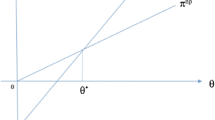Abstract
The investment in research and development (R&D) for semiconductor industry is never small as the technology cycle time (TCT) is relatively short comparing to other industries, thus a semiconductor company requires lots of technological innovations and capital offerings to maintain. The semiconductor industry contributes primarily part of the micro-electronic industries. Advancing technology and patent application are the centre of attention within the semiconductor sector. This research examines the relationship between patent quality and the profits a patent creates for a company in this selected field. This study distinguishes itself from prior research by including cross-sectional data, time series data to simultaneously collect and analyze. The study result shows that some indicators of patent quality are statistically significant to return on assets.
Similar content being viewed by others
References
Breitzman, A. F., & Narin, F. (2001). Method and apparatus for choosing a stock portfolio, based on patent indicators. US Patent 61758214.
Deng, Z., Lev, B., & Narin, F. (1999). Science and technology as predictors of stock performance. Financial Analysts Journal, 55(3), 20–32.
Ernst, H. (1998). Patent portfolios for strategic R&D planning. Journal of Engineering and Technology Management, 15, 279–308.
Hagedoorn, J., & Cloodt, M. (2003). Measuring innovative performance: Is there an advantage in using multiple indicators? Research Policy, 32, 1365–1379.
Hausman, J. A. (1978). Specification tests in econometrics. Econometrica, 46(6), 1251–1271.
Markman, G., Espina, M., & Phan, P. (2004). Patents as surrogates for inimitable and non-substitutable resources. Journal of Management, 30(4), 529–544.
Ramanathan, K. (1999). Determinants of value in pharmaceutical innovation: A property rights approach. Ph. D. dissertation, University of Illinois.
Thomas, P., CHI Research Inc., McMillan, G. S., & Abington, P. (2001). Using science and technology indicators to manage R&D as a business. Engineering Management Journal, 13(3), 9–14.
Author information
Authors and Affiliations
Corresponding author
Rights and permissions
About this article
Cite this article
Cheng, YH., Kuan, FY., Chuang, SC. et al. Profitability decided by patent quality? An empirical study of the U.S. semiconductor industry. Scientometrics 82, 175–183 (2010). https://doi.org/10.1007/s11192-009-0080-4
Received:
Accepted:
Published:
Issue Date:
DOI: https://doi.org/10.1007/s11192-009-0080-4




